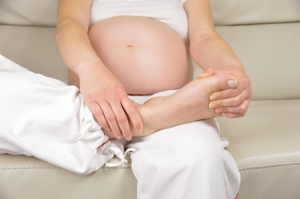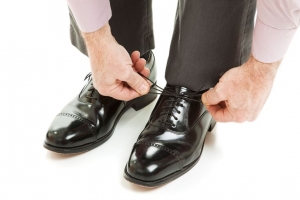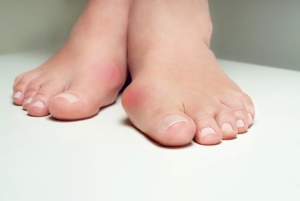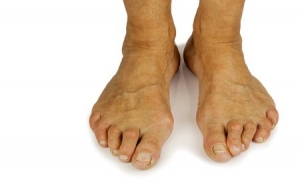Connect With Us
Blogs
Displaying items by tag: custom orthotic
Focus on Female Foot Health
March is Women’s History Month. At Superior Foot & Ankle Center we thought we’d help celebrate our Los Angeles County women by providing tips on taking good care of their feet.
Bunion Prevention
Although men can also get bunions, it is a deformity that plagues women more frequently and this is due in part to shoes. High heels that force the foot forward exerting excess pressure on the toes and styles with narrow, pointy toe boxes are a contributing factor in the development and progression of bunions. In some cases, the tendency for the toe joint to move out of place is genetic. There are exercises that can be done to strengthen toes and feet and help prevent bunions. The podiatrist may also recommend a custom orthotic device to realign the foot properly and relieve pressure on the toes. If you notice your toe moving out of place, even slightly, it’s important that you make an appointment at our Long Beach office by calling (562) 420-9800. The earlier our podiatrists, Dr. Victoria M. Foley and Dr. Constance Ornelas, are able to diagnose a bunion the greater chances of being able to slow its progression.
Importance of Good Footwear
Well-made footwear for women is important for other reasons beyond bunion prevention. It’s essential that your shoes have good arch support (often lacking in fashion boots and some other styles) in order to avoid heel pain. On average, women walk 3 miles more a day than men, and a cushioned insole can greatly increase comfort. A less positive statistic: it’s estimated that up to 90% of women are wearing shoes that are too small for their feet. Get your feet professionally measured when buying new shoes and understand that your foot size can change over time.
As You Age
It’s natural as you get older for your feet so show some signs of “wear and tear.” However, that does not mean that foot pain is “normal” as a senior. Fat pads on the soles and heels may deteriorate requiring you to add some gel or other padding to your shoes. Be on the lookout for stiffness in joints that may signal arthritis. It’s important to maintain a regular exercise routine and not to sit with your legs crossed for long periods of time to encourage good circulation. You may also notice symptoms in your feet that point to other, more serious systemic conditions such as diabetes or arterial disease. Alert your podiatrist to unusual symptoms such as loss of hair on your legs or toes, cold feet, or decreased sensation in your feet.
Healthy feet help successful women get where they want to go! If you have questions or concerns about your feet, don’t hesitate to contact us.
Avoid Foot Problems During Pregnancy
Are you pregnant? Congratulations! At Superior Foot & Ankle Care Center, we know how excited you must be. We also want to do our part to help ensure that your pregnancy proceeds as comfortably as possible. Hormonal changes and weight gain that occur naturally during pregnancy can play havoc on the health of your feet. Below are some common problems pregnant women encounter and what to do about them.
Arch and Heel Pain—these are perhaps the most common complaints pregnant women have about their feet. As your pregnancy progresses, the added weight can have the effect of flattening your arch, resulting in symptoms similar to those of patients with flat feet. Pain in the arch and heel pain due to the strain put on the plantar fascia (the long band of tissue that runs along the bottom of your foot) are not uncommon. To combat this type of discomfort, look for shoes with extra arch support. In some cases, our podiatrists, Dr. Victoria M. Foley or Dr. Constance Ornelas will fit you with a custom orthotic device to wear in your shoes.
Ingrown toenails—hormones released by your body toward the end of your pregnancy to help relax ligaments to make birth easier can affect your feet by causing them to spread. Your shoes may start to feel too tight. When toes are pressed up against each other for long periods of time, ingrown toenails can develop. It may be necessary to buy shoes that are a larger size or wider width for the last trimester.
Swelling—excess fluid in your body, and the position of the baby may result in swollen feet and ankles. This can lead to discomfort and pain. The best way to reduce swelling is by putting your feet up frequently. Stretching, not crossing your legs when sitting and drinking lots of water will help too.
If your feet are giving you trouble during your pregnancy, make an appointment at our Long Beach office in Douglas Park CA by calling: (562) 420-9800. Our podiatrists will help get to the source of your discomfort and prescribe a safe and effective treatment.
Shoe Tips You Should Know
At Superior Foot & Ankle Care Center, our podiatrists, Dr. Victoria M. Foley or Dr. Constance Ornelas know that your shoes play a significant role in the health of your feet. Many common podiatric disorders can be caused or made significantly worse by wearing improper footwear. That’s why our podiatrists may ask you to bring the shoes you wear most often to our Long Beach office when you come for your appointment. If you have a chronic foot problem, talk to the foot doctor (contact us at 562-420-9800) about the best styles and brands of shoes for your particular condition. Below are some recommendations for choosing good shoes.
- Start by getting your foot measured by a professional. Some studies estimate that as many as 9 out of 10 people are wearing shoes that are too small for them. Foot size can change as you age.
- You should not be surprised if one of your feet measures larger than the other. This is true for most people. Always buy shoes that fit the bigger foot.
- Shop for shoes at the end of the day—that’s when your foot is at its largest and most swollen.
- Choose shoes with good arch support. This will help prevent heel pain and plantar fasciitis. Wearing shoes that are completely flat like flip-flops or ballet slippers greatly increases your risk of this condition.
- Cushioned and molded footbeds not only feel more comfortable, they act as shock absorbers, reducing the impact of your foot hitting the ground with each step you take.
- Wear the type of sock you will most likely use with the shoes you are buying. If the podiatrist has prescribed a custom orthotic, you also try it on with the shoes.
- Always try on both shoes and spend some time walking around the store to check for comfort and fit.
- Don’t buy shoes that pinch your feet or feel tight anywhere. There is no such thing as a “breaking in” period. Shoes should feel comfortable from the moment you leave the store.
What’s Behind Bunions?
At first, a bunion may appear very subtle. You may look down and notice your big toe seems to be leaning slightly toward the second toe. At Superior Foot & Ankle Care Center, we find many patients are unfamiliar with how bunions develop and therefore may not come in promptly to get them evaluated.
Know Your Risk Factors
Most often, bunions are caused by a biomechanical defect in your feet. This may be a neuromuscular problem, flat feet or overpronation. In many instances, this fault in the mechanics of your feet may be inherited. There are other factors, however, that can also increase your risk of developing a bunion, including:
- Wearing tight-fitting shoes with pointy or narrow toe boxes
- Spending long periods of time in high-heeled shoes or boots
- A previous foot injury
- Congenital defect
- Repetitive stress to the foot
- Arthritis
Seek Treatment Early
In its early stages, a bunion may not cause you any pain or discomfort. However, bunions are a progressive disorder. As time goes on, the big toe joint will move further and further out of place until it begins to cause pain when you walk. It will also become increasingly difficult to wear shoes due to the pressure exerted on the bunion by your footwear. The toe can eventually become rigid in the defective position and cause other deformities such as hammertoes to occur. It’s essential that you make an appointment at our Long Beach office so that our podiatrists, Dr. Victoria M. Foley or Dr. Constance Ornelas can examine your foot. Fortunately, there are many treatment options available which can slow the progression of the bunion and prevent foot pain and discomfort. These include:
- Altering your activities to avoid motion that exerts adverse pressure on the bunion
- Using a custom orthotic to correct the biomechanical problem and increase stability
- Exercises to increase joint mobility
- Night splints to realign the joint
If you think you have a bunion forming, don’t wait. Contact us today for an appointment by calling: (562) 420-9800.
Do’s and Don’ts for Getting Your Child Ready for Spring Sports
It’s time for another sports season and we at Superior Foot & Ankle Care Center want to ensure that your child gets a safe start. Below are some do’s and don’ts to help prepare young athletes to have a successful and injury-free season.
Do: start by making sure your child’s feet and ankles are in tiptop shape. Get any lower extremity pain or discomfort checked by our podiatrists, Dr. Victoria Foley and Dr. Constance Ornelas. In addition to assessing the health of your child’s feet, the foot doctor will also revisit the site of any previous trauma to be sure there is no risk for re-injury.
Do: ask the foot doctor about any accommodations necessary for chronic conditions such as plantar fasciitis or weak ankles. The foot doctor may recommend specific shoe styles or a custom orthotic device for your child.
Don’t: allow your child to go from zero to sixty on the physical activity scale. Many injuries, like Achilles tendonitis and shin splints, occur when children go directly from a period of inactivity to intense workouts.
Do: ask the coach a few weeks before the season starts to provide you with stretching and conditioning exercises and suggestions for how your child can gradually build up strength and stamina for their sport.
Do: get the right shoes for the sport your child will be participating in. This may be the single, biggest step you can take to prevent sports injuries. Get feet measured professionally and choose shoes that offer the proper support for ankles and arches.
Don’t: allow your children to wear passed on sports shoes. Shoes do conform to the shape and gait of the person who wears them. Putting your child in someone else’s shoes may do harm to their feet.
Do: check the conditions of the field, track or other surfaces where your child’s practices and games will take place. Speak up if you notice cracked pavement, uneven playing surfaces or fields that have many holes and divets. These can all lead to podiatric and other injuries.
Don’t: hesitate to contact our Long Beach office if your child experiences pain or discomfort in their lower extremities as the season progresses.
Questions about Bunion Surgery
Bunions are a condition that we at Superior Foot & Ankle Care Center treat often. A bunion is a deformity of the toe joint that most often affects the big toe. It causes the joint to move out of place and drift toward the second toe. Bunions can have a number of different causes, including:
- Neuromuscular problems
- Flat feet
- Recurring stress to the foot
- Congenital defects
- Previous injury
- Arthritis
- Ill-fitting footwear
Bunions are a progressive disorder, which means they will continue to get worse over time. Our podiatrists, Dr. Victoria Foley or Dr. Constance Omelas will start by doing a complete physical examination of your feet. While conservative measures are always preferable, if your bunion has progressed to the point where it is impeding your ability to wear shoes and walk without pain, surgery may be the best treatment option. Below are some questions to ask before scheduling bunion surgery:
What type of bunion surgery do you recommend? There are several different kinds of bunionectomies. The foot and ankle surgeon will choose the type that best addresses the structural changes that have occurred to your toe because of the deformity. Ask the podiatrist to thoroughly explain the surgical procedure and ask questions if there is anything you don’t understand.
Where will the surgery take place? Bunion surgery is usually performed on an outpatient basis under local anesthesia. It will be necessary to have someone drive you home so be sure to arrange for that before the date of the surgery.
What will the recovery be like? You will have to avoid bearing weight on the affected foot for some period of time after the surgery. Ask the foot doctor how long you will need to be out of work. In addition, you’ll want to know how much discomfort to expect post operatively. Even after you are able to bear weight and return to work, you may need to do physical therapy or use a custom orthotic. Find out what results the podiatrist expects from the surgery and what the post-surgical treatment plan will consist of.
Knowing what to expect for your bunion surgery will reduce worry and help you better prepare for the modifications to your schedule. If you have additional questions, don’t hesitate to contact our Long Beach office by calling: (562) 420-9800.






